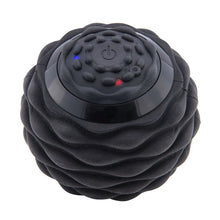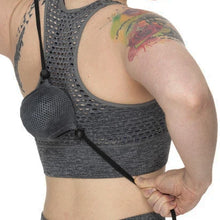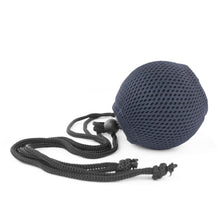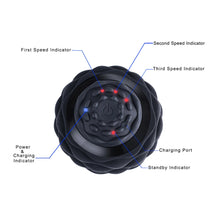
Info: USB-Rechargeable With 4 High-Intensity Vibration Modes; Limited Quantity Available
The Acufit massage ball is one of the most unique pieces of athletic and rehabilitation equipment on the market, which can not only be used to help you warm-up before an exercise, workout, or athletic routine, but also to help release muscle tension, and to aid recovery.
Info: USB-Rechargeable With 4 High-Intensity Vibration Modes; Limited Quantity Available
The Acufit massage ball is one of the most unique pieces of athletic and rehabilitation equipment on the market, which can not only be used to help you warm-up before an exercise, workout, or athletic routine, but also to help release muscle tension, and to aid recovery.
Product Notes:
Even before it gets powered up, its textured silicone surface alone makes it capable of providing extensive myofascial release by rolling it on (or beneath) your body. And that experience can be easily amplified with high-intensity vibrations, in a choice of four speeds which can be adjusted to your preference simply by pressing the power button.
In some respects, the Acufit is equivalent to having a high-end foam or massage roller, but with a much smaller 'form factor': small enough to fit into a purse or a deep coat pocket.
For those who may be unfamiliar with the concept of myofascial release (or MFR), allow us to try to break it down for you, in stages:
- The fascia are fibrous tissues which appear in various thicknesses and densities, stretching out like webs to help envelop (and give shape to, and retain the moisture within, and lubricate) our muscles, bones and organs throughout our bodies. (The thin film you can see covering chicken breasts after the skin is removed is one example of it.)
- The fascial system is the continuous feedback network of those and other connective tissues such as tendons and ligaments, and much more, which not only enables the brain to keep track of the positions of all our body parts and either tauten up or relax your muscles, but is also involved in releasing neurochemicals to induce or reduce inflammation and to transmit pain signals.
- Myo simply refers to muscular type fascia in particular, which can apparently develop tears in it (whether from overusing our muscles or through impact injuries) and then develop adhesions or knots as the different layers of fascia grow back imperfectly, which may cause pain and discomfort and prevent the muscles from working normally. One area of this you've likely already heard of (if only in passing) is plantar fasciitis, or heel pain.
- Myofascial release is when some type of mechanical stimulation (such as massage) is used to put pressure on these adhesions in the muscular fascia intended to produce a cascade of effects: to increase the blood flow to and release some of the tension and soreness in the muscles, and to reduce the pain and inflammation signals being sent. Although it is still a matter of contention in some quarters, there are now not only 'proof of concept' studies showing there can be physiological effects, but also clinical evidence that it can provide pain reduction improvements in several areas: low back, hip and knee osteoarthritis, fibromyalgia, and contending with scar tissue after surgery.
There are two main avenues for achieving myofascial release: from massage therapists, who feel for the knotty spots or trigger points in the muscles and use a kneading massage to work them out; and through self-myofascial release (SMFR) using various devices such as foam rollers or medium-size (6" diameter) balls.
This, of course, is where the Acufit fits in, to provide quick and effective stimulation and relief, either simply as it is, or best of all, switched on to one of its four vibration levels, to provide powerful, localized deep tissue massage.
To use it, simply roll it onto whichever parts of your body you wish (or place it on the floor and roll various parts of your body over it): whether your back, shoulders, hips, glutes, thighs, hamstrings, calves and feet.
To make it easier to use on your back without having to lay down on it, this vibrating massage ball also comes with a mesh sack on a rope. Its vibration modes are powered by an internal USB-rechargeable battery, so naturally it comes with cord to connect to either your computer or a wall charger for that purpose. It comes with a 1 year warranty from Relaxus.
Suggested Usage:
To use the massager on your own back, utilizing its mesh sack holder and rope:
- Carefully insert massage ball into the mesh sack, with the front control panel oriented at one of the openings.
- Pull on the two rope handles to close the mesh sack, and adjust the rope cinch to tighten it securely around the ball.
- Turn on the massage ball, and set it to the desired vibration level.
- Hold the rope handles, one in each hand, and then position the ball on the desired soft tissue areas.
Supporting Science:
Farra FD, et al. "Effectiveness of Osteopathic Interventions in Chronic Non-Specific Low Back Pain: a Systematic Review and Meta-Analysis." Complementary Therapies in Medicine. Nov. 2020.
Flynn DM. "Chronic Musculoskeletal Pain: Nonpharmacologic, Noninvasive Treatments." American Family Physician. Oct. 2020.
Wasserman JB, et al. "Effect of soft tissue mobilization techniques on adhesion-related pain and function in the abdomen: A systematic review." Journal of Bodywork and Movement Therapies, Apr. 2019.
Zein-Hammoud M & Standley PR. "Modeled Osteopathic Manipulative Treatments: A Review of Their in Vitro Effects on Fibroblast Tissue Preparations." The Journal of the American Osteopathic Association, Aug. 2015.







